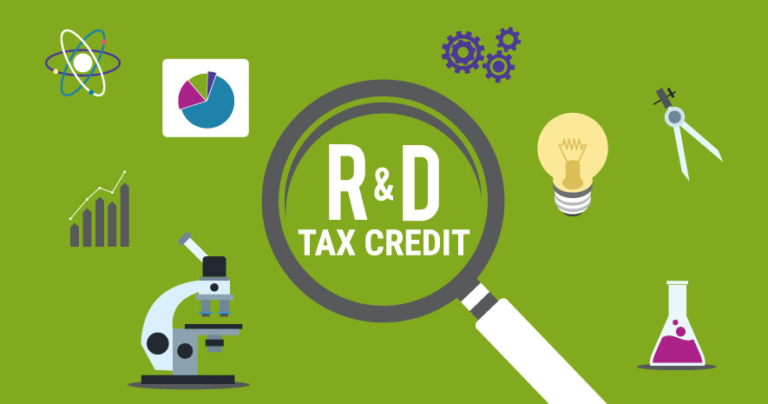Are you running a construction company and feeling the pinch of high taxes? Do you often wonder if there’s a way to reduce your tax burden while still investing in innovation? Many construction business owners don’t realize they might be missing out on significant tax savings through R&D tax credits.
I recently spoke with the R&D experts at FI Group. They shared valuable insights about how construction companies can benefit from these often-overlooked credits. This guide will break down what I learned, helping you understand if your construction business qualifies for R&D tax credits and how to claim them.
Understanding R&D Tax Credits for Construction Companies
First, let’s make sure that everyone is on the same page. R&D tax credits are a government incentive designed to encourage innovation in businesses. These credits allow companies to reduce their tax bill when they spend money on developing new products, processes, or solutions. The purpose is simple: to reward companies for taking risks and pushing their industry forward.
Many construction companies overlook these credits because they don’t think their work counts as “research and development.” The consultants at FI Group explained that this is a common misconception. Construction firms often engage in R&D without realizing it. Activities like developing new building techniques, testing innovative materials, or creating custom solutions for complex projects can all potentially qualify.
The financial benefits for construction firms can be significant. These credits can lead to substantial tax savings. For example, a mid-sized construction company might save tens or even hundreds of thousands of dollars annually. This money can then be reinvested into the business, used to hire more staff or put towards new equipment.

It’s important to note that these credits aren’t just a one-time thing. If your company continues to innovate and improve its processes year after year, you can claim them annually. This ongoing benefit can have a major impact on your company’s bottom line over time.
Qualifying Activities in the Construction Industry
Design and Engineering Activities
FI Group explained that many design and engineering activities in construction can qualify for R&D tax credits. These activities often involve solving unique problems or improving existing processes. Here are some examples:
- Design-build projects: When your team handles both design and construction, you might qualify if you’re developing new approaches to integrate these processes.
- Value engineering: If you’re finding ways to reduce costs while maintaining or improving function, this can count as R&D.
- Innovative design solutions: Creating unique designs for challenging sites or developing new ways to meet specific client needs can qualify.
- Building Information Modeling (BIM): Developing or improving BIM processes to optimize project coordination and efficiency may be eligible.
Construction Methods and Techniques
Developing new construction methods is a key area where construction companies can qualify for R&D credits. FI Group pointed out that this isn’t just about inventing completely new techniques but also includes improving existing methods. For example:
- Creating more efficient ways to pour concrete or install complex systems
- Developing new scaffolding or support structures for unique building shapes
- Finding innovative ways to construct in challenging environments, like underwater or in extreme temperatures
It’s crucial to document these activities. Keep records of team meetings, design iterations, and testing processes. This documentation is important evidence if you need to prove your R&D activities to tax authorities.
Sustainable and Green Building Initiatives
Eco-friendly innovations are increasingly important in construction and can often qualify for R&D credits. There are several areas:
- Developing or implementing new energy-efficient building systems
- Experimenting with sustainable materials to improve building performance
- Creating new methods for reducing waste or recycling materials on-site
- Designing systems to reduce water usage or improve air quality in buildings
These activities not only contribute to a greener future but can also lead to significant tax savings for your company. Remember, the key is that you’re trying to solve problems or improve processes in ways that aren’t obvious or easily deducible.
Eligible Expenses for R&D Tax Credits
However, not all expenses related to R&D activities qualify for tax credits. There are three main types of expenses that do qualify:
- Wages: This includes salaries paid to employees who directly perform R&D activities, supervise R&D, or directly support R&D work.
- Supplies: These are materials used in the R&D process. In construction, this might include experimental materials or components used in prototypes.
- Contract Research: If you hire outside contractors to perform R&D activities for your company, a portion of these costs may qualify.
In construction projects, these expenses typically occur as follows:
Wages:
- Project managers’ time spent developing new construction methods
- Engineers’ hours dedicated to designing innovative solutions
- Technicians’ time testing new materials or processes
Supplies:
- Experimental materials used in developing new construction techniques
- Components used in building prototypes or test structures
Contract Research:
- Fees paid to external engineering firms for specialized design work
- Costs for outside labs to test new materials or methods
FI Group US provided an example calculation to show potential savings:
Let’s say a construction company has the following qualified R&D expenses in a year:
- Wages: $500,000
- Supplies: $100,000
- Contract Research: $50,000
Total Qualified Research Expenses (QREs): $650,000
The federal R&D tax credit is generally calculated at 10% of QREs:
$650,000 x 10% = $65,000 potential tax credit
This means the company could reduce its tax bill by $65,000 for that year. Remember, this is a simplified example. The actual calculation can be more complex and may vary based on your company’s specific situation and state-level credits.
The Four-Part Test for Qualifying Research
The IRS uses a four-part test to determine if activities qualify as R&D for tax credit purposes. Let’s look at each part in the context of construction:
1. New or improved products, processes, or software
This means you’re trying to create or improve something in your business. In construction, this could be:
- Developing a new method for laying foundations in unstable soil
- Improving an existing process for installing solar panels on roofs
- Creating software to manage complex construction schedules better
2. Technological in nature
The research must rely on principles of physical sciences, engineering, or computer science. In our case, this might involve:
- Using engineering principles to design a more efficient HVAC system
- Applying physics to create stronger, lighter building materials
- Using computer science to develop better project management software
3. Elimination of uncertainty
You must be attempting to remove doubt about the development or improvement of a product or process. For example:
- Figuring out if a new type of insulation will work in extreme temperatures
- Determining if a new construction technique can meet local building codes
- Testing if a new concrete mix will be strong enough for a specific use
4. Process of experimentation
This involves evaluating alternatives through trial and error, testing, or modelling. Construction examples include:
- Testing different materials to find the most durable flooring for high-traffic areas
- Modelling various designs to create the most energy-efficient building shape
- Trying different methods to reduce noise transmission between apartment units
Now let’s give a more specific example of how these four parts might come together in construction projects:
A construction company is working on a skyscraper in an earthquake-prone area. They’re developing a new foundation system (new product) using advanced engineering principles (technological in nature) to determine if it can withstand stronger earthquakes (elimination of uncertainty). They create scale models and run computer simulations to test different designs (process of experimentation).
How to Claim R&D Tax Credits for Your Construction Company
Here are the steps you need to take in claiming R&D tax credits for construction companies:
- Identify qualifying activities – review your projects from the past year to identify work that might qualify as R&D.
- Gather documentation – collect relevant documents such as project plans, meeting notes, test results, and payroll records.
- Calculate qualified expenses – determine the amount spent on wages, supplies, and contract research for R&D activities.
- Complete IRS Form 6765 – this is the official form for claiming the R&D tax credit.
- Include the form with your tax return – submit Form 6765 along with your company’s regular tax return.
The timeline of claiming R&D will vary based on the complexity of your projects and the size of your company. It is recommended to start the process at least 2-3 months before your tax return is due.
Remember, claiming R&D tax credits is not a one-time event. If you continue to innovate, you can claim these credits year after year. By making it a regular part of your tax planning, you can significantly reduce your tax burden over time and reinvest those savings into your business.
Now the tricky question… Can you claim these credits on your own? The answer is “Yes”. However, there is a chance that you can make some mistakes during the process, or have questions to which it will be difficult to find answers.
Plus, don’t forget that without a good audit, it might be difficult to understand if you are really eligible for them. So the best solution is to work with R&D tax credit consultants. And as you see, FI group are one of them.

